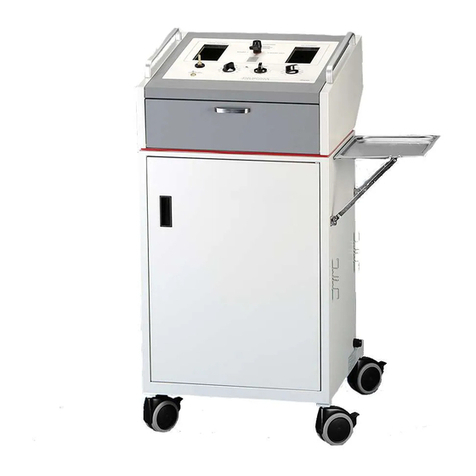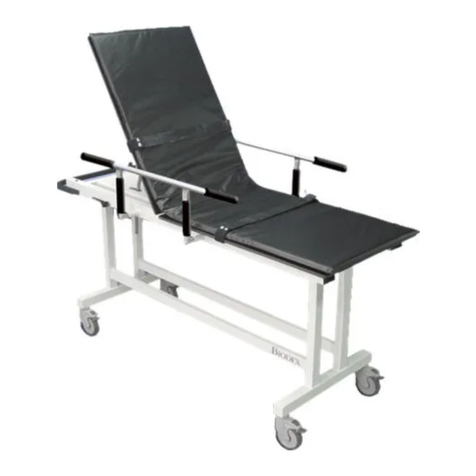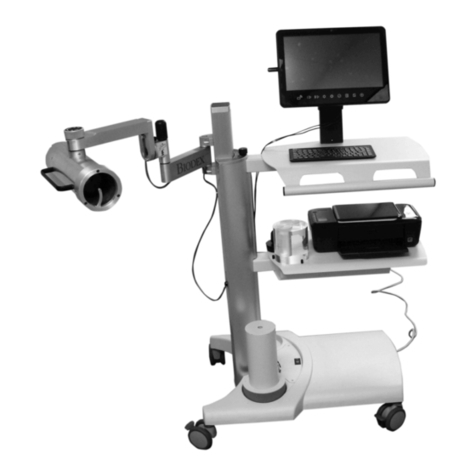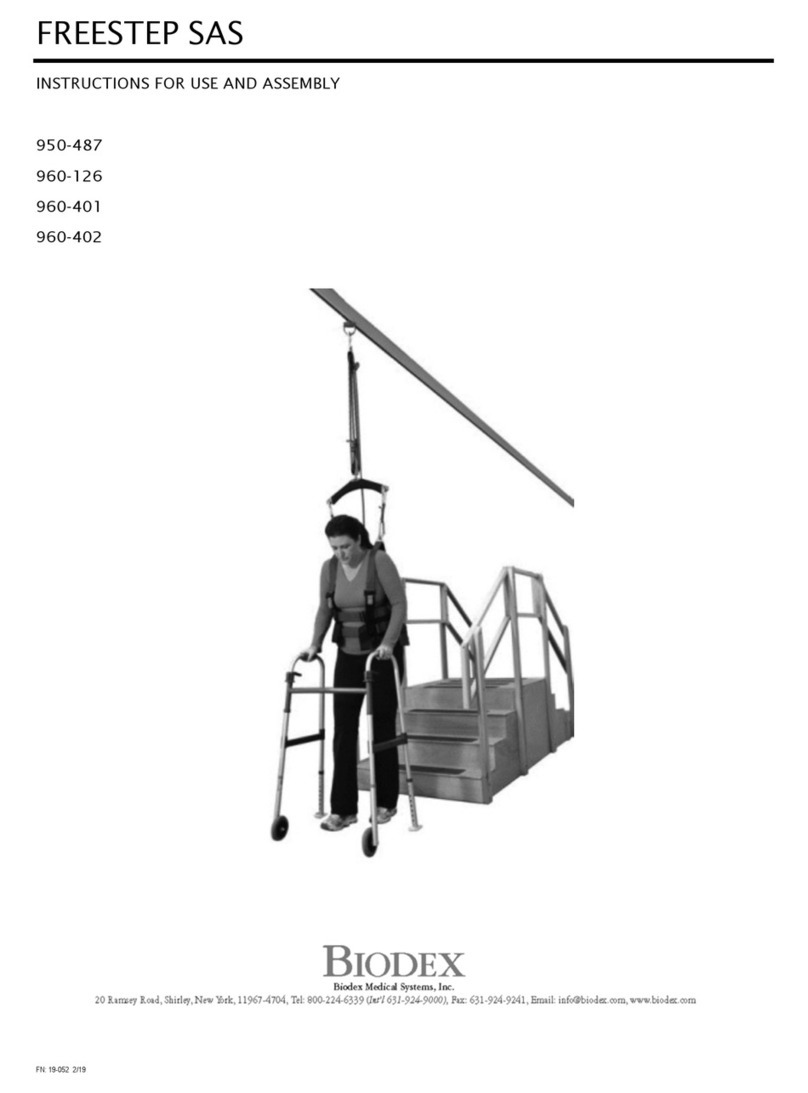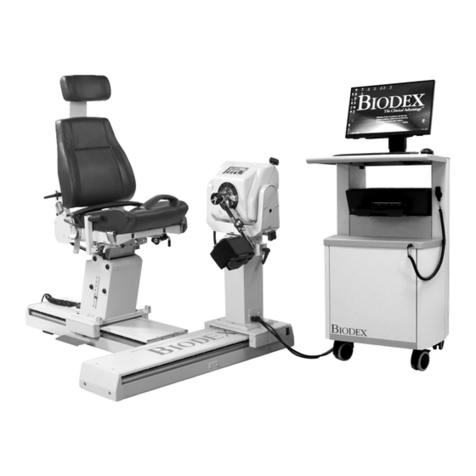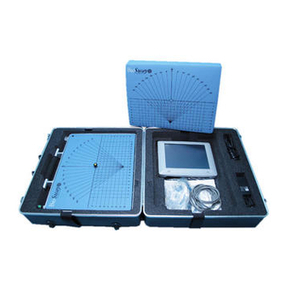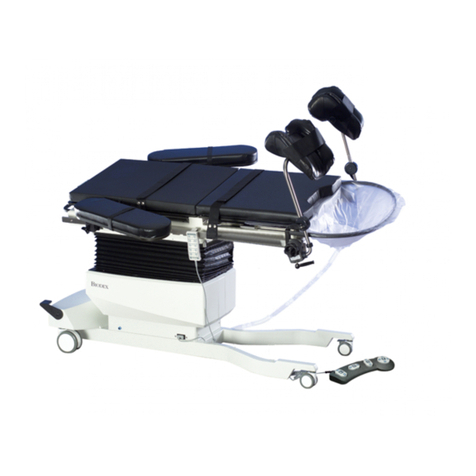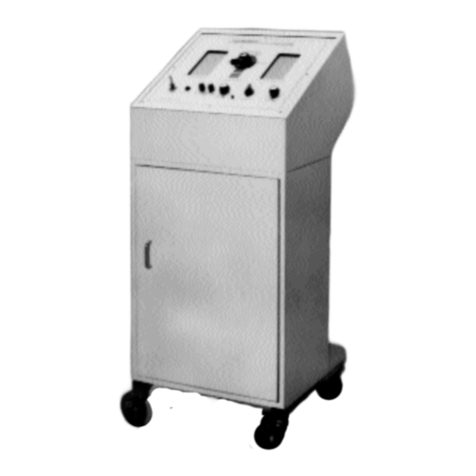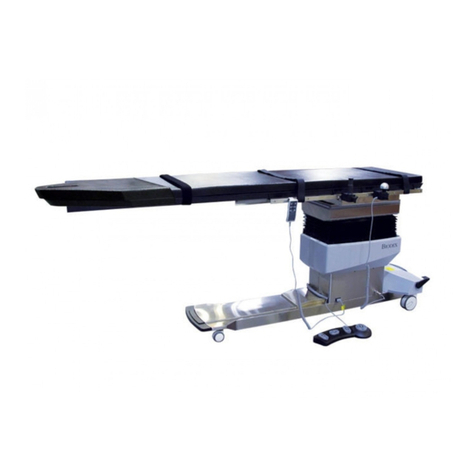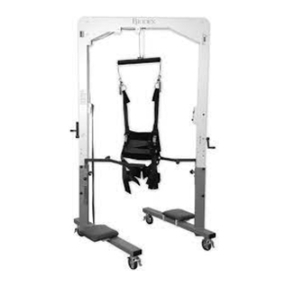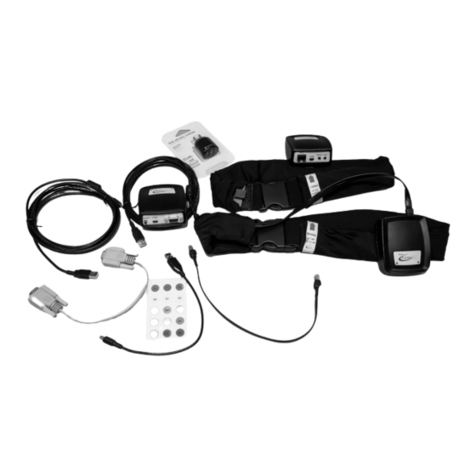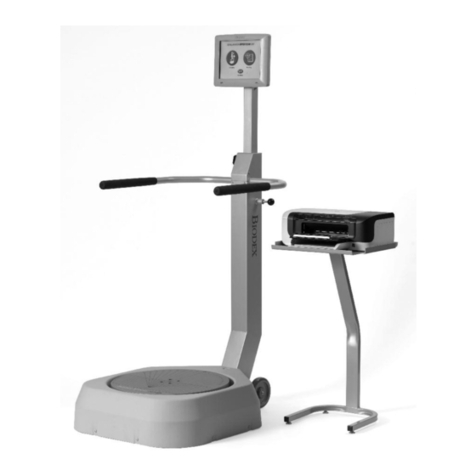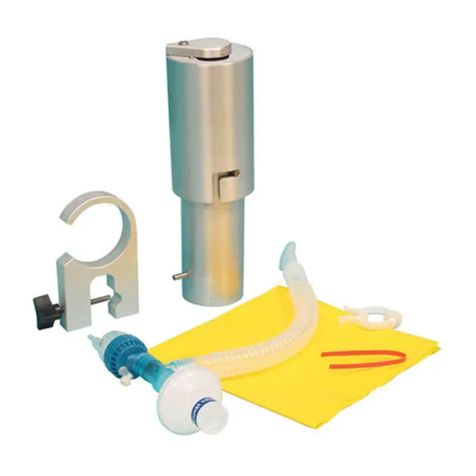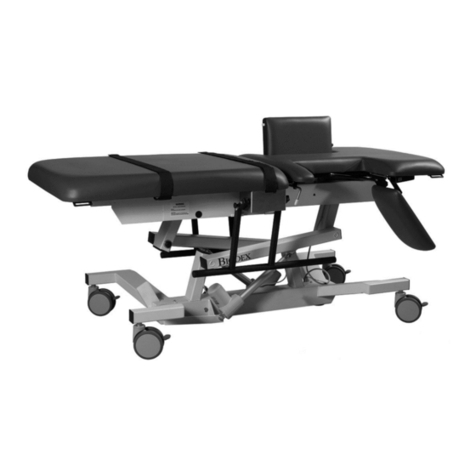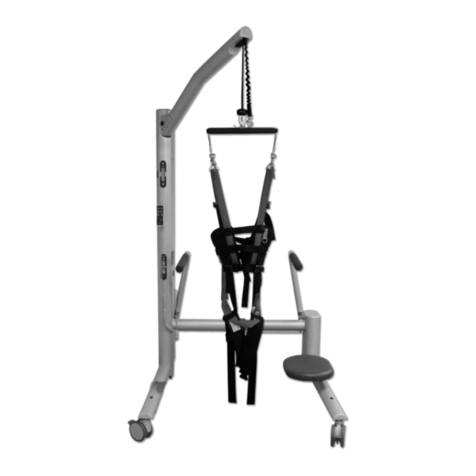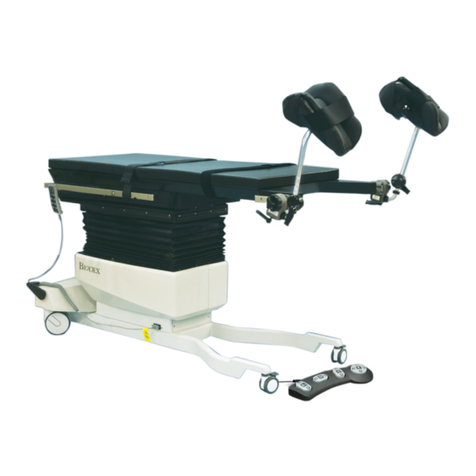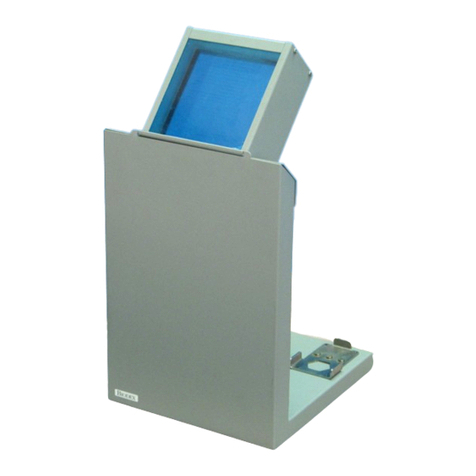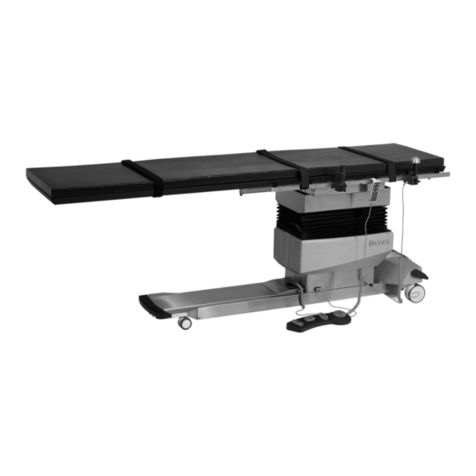
-2-
This manual covers installation and operation
procedures for the following products:
#056-605 Table, Ultrasound, Basic
#056-609 Table, Ultrasound, Basic
Includes: Side Rails
#056-613 Table, Ultrasound, Basic
with Convenience ackage
Includes: Side Rails, Stirrups and IV ole
INT ODUCTION
The Basic Ultrasound Table features three primary positions:
horizontal, chair and Trendelenburg.
A convenient and easy-to-operate hydraulic foot pump
adjusts table height during patient transfers and scanning pro-
cedures. Trendelenburg positioning is easily performed with a
smooth-turning hand crank. Ankle straps, located at the under-
side of the leg section, prevent patient sliding during
Trendelenburg positioning. Fowler positioning is accommodat-
ed with preset stops at 0°, 15°, 35°, 55° and 80°. The table-
topʼs hourglass shape narrows to 19 inches, providing com-
fortable scanning probe positioning at and below the plane of
the tabletop. The leg section unlocks and swings down for
chair positioning, or for positioning with optional stirrups.
Patient comfort during lengthy procedures is assured by
two-inch thick table padding covered in durable and easy-to-
clean Naugahyde®. Two adjustable straps with Velcro®hook
and loop fastening are provided for increased patient stabili-
ty and comfort. Five-inch locking swivel casters provide
smooth and secure table positioning. Optional folding side
rails drop down and out of the way for unobstructed access
to the patient.
GENE AL SAFETY CONSIDE ATIONS
CAUTION: Failure to follow the instructions in this
manual could result in injury to the patient, yourself or
others.
1. Ensure that the casters are locked prior to placing the
patient on or removing the patient from the table.
2. Never place a patient on or remove a patient from the
table when it is in a Trendelenburg position.
3. The table is designed to hold 350 lbs. maximum.
Exceeding this limit could cause damage to the table which
could result in injury.
4. Never allow anyone to sit on the leg support. Its maxi-
mum load is 75 pounds. atients should always sit on the
central seat cushion prior to laying flat on the table.
5. Use the ankle straps when placing a patient in a
Trendelenburg position.
6. The patient restraining straps are intended for use only
as a means to limit patient motion during imaging for
improved image quality. They are not intended to protect
uncontrolled patients from hazards such as entrapment by
moving equipment, or falling off the table.
7. The casters provided on this table are not intended to be
used for transporting the patient outside the imaging room.
8. eriodically inspect the table for proper operation and
damage. Remove the table from service for further inspec-
tion and repair whenever any of the following conditions are
detected:
• Excessive play or looseness in any of the table motions
• Any motion binding or difficult to move
• Downward drifting of the tabletop
• Damaged or loose casters or caster wheel locks
• Any signs of damage to the table support structure such
as cracks, bent parts or looseness.
See the “Maintenance” section of this manual for further
considerations.
CONSIDÉ ATIONS GEENEE ALES DE SÉCU ITÉ
ATTENTION: Le non-respect des consignes de ce
manuel peut provoquer des blessures au patient, à
vousmême et à dʼautres.
1. Sʼassurer que les roues sont verrouillées avant de placer
le patient sur la table ou de lʼen retirer.
2. Losque la table est en position Trendelenburg, ne jamais
placer le patient ni lʼen retirer.
3. La capacité maximale de la table est de 159 kg (350 lb ).
Ne pas dépasser cette lamite afin dʼéviter dʼendommager la
table, ce qui pourrait causer des blessures.
4. Ne jamais laisser personne sʼasseoir sur le support des
jambes ou du dos. Sa charge maximale est de 34 kg (75
lb). Les patients doivent toujours sʼasseoir sur le coussin de
siège central avant de sʼétendre à plat sur la table.
5. Utiliser les courroies de retenue du patient ainsi les cour-
roies de cheville pour placer un patient en position de
Trendelenburg.
6. Les courroies de retenue du patient nʼont pour seul but
que de limiter les déplacements du patient durant la visuali-
sation en vue dʼune image de qualité supérieure. Ils nʼont
pas pour but de protéger les patients sans contrôle des
risques comme celui de se coincer contre un appareil en
mouvement, ou de tomber de la table.
7. Les roulettes donʼt cette table est pourvue ne sont pas
destinées à être utilisées pour tranporter le patient en
dehors de la salle de visualistion.
8. Examiner périodiquement la table pour sʼassurer quʼelle
fonctionne adéquatement et quʼelle nʼest pas abîmée. Retirer
la table du service pour examen ultérieur et réparation si on
décèle lʼune quelconque des conditions suivantes:
• Jeu excessif ou desserrage dans lʼun quelconque des
déplacements de la table.
• Toute gêne ou difficulté de mouvement.
• Abaissement inopiné de la table.
• Roulettes ou verrous de roulette endommages ou
desserrés.
• Tous signes de dommages à la structure de support de
la table, par exemple les fissures, les pièces repliées ou
desserrées, notamment dans le secteur de la charnière
pour le dossier.
Se reporter à la section Entretien de ce manuel pour
autres considérations.








